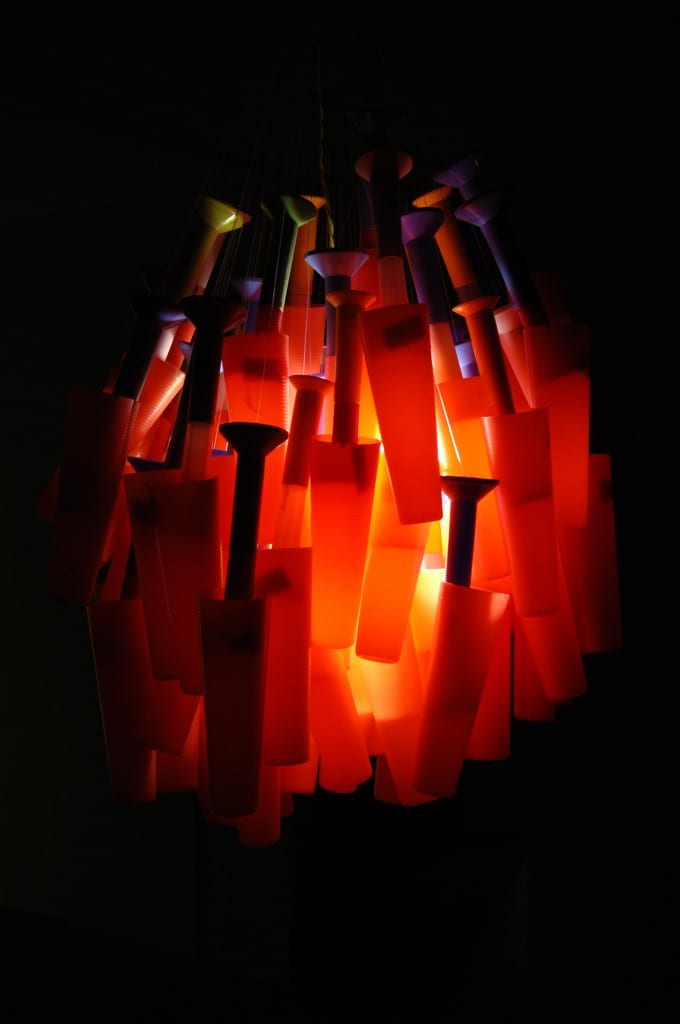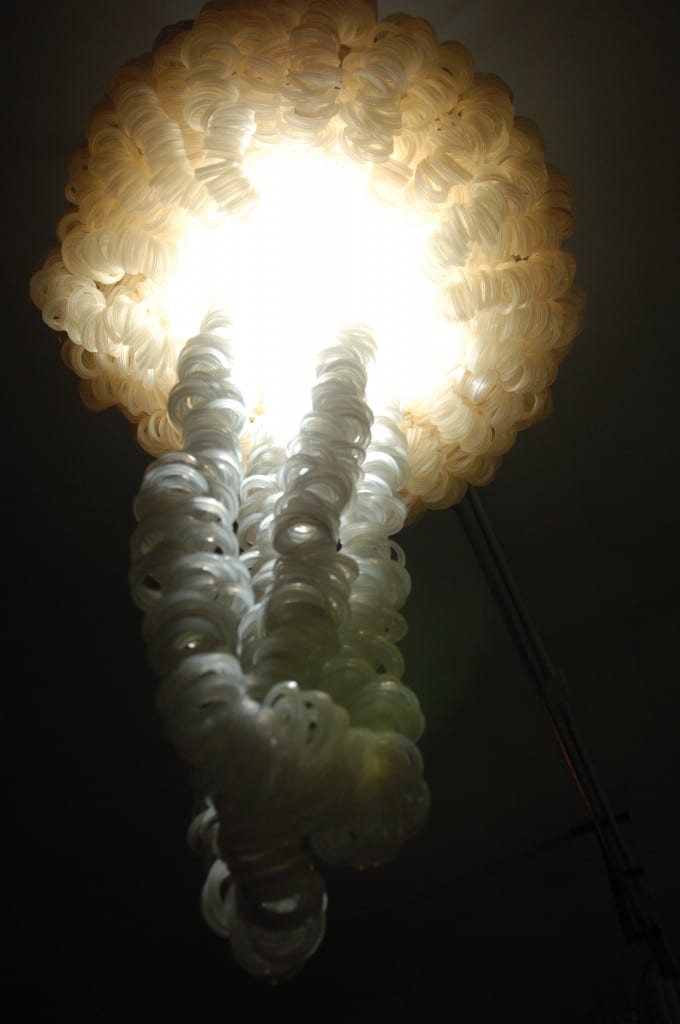Our very own David Bramston has produced an illuminating exhibition in China; the exhibition is the first of its kind and showcases a collection of 100 lights created from waste materials.
David, and his team of nine design students from Guangzhou Institute of Technology, created each of the 100 lights at the headquarters of Guangzhou Valuda Group Ltd in China in just three weeks. The lights have been constructed entirely from waste materials from various factories across China.
The sustainable design project has been running with support from the British Council, as part of its ‘upcycling’ campaign to encourage young designers to turn discarded materials into attractive and useful new products.
David Bramston, who leads the MA International Design Enterprise programme at the University of Lincoln, said: “This has been an incredibly exciting project to work on. We have been involved with a number of upcycling schemes led by the British Council in the past; however the experience of creating 100 new products entirely from waste materials in just 21 days has been unlike any of our other design initiatives.
“New design professionals need to recognise that their decisions to engage with more considered and environmentally friendly practices can influence cultural change. The British Council in China and their sponsors provide a valuable international platform for doing this, which we are delighted to be associated with. It has been a pleasure to work with a very exciting team of young designers here in China, and these practices continue to feed into our work in Lincoln.”
The 100 Lights exhibition opened in Guangzhou on Thursday 18th December 2014 with a launch event that was attended by guests from education, industry and the British Council. The collection will be shown in Beijing throughout this year, and could also form part of the British Council’s China UK Cultural Year in 2015.
One of the light creations – a five metre high construction entitled ‘Bamboo’ – has also been selected by an art gallery in Guangzhou to form a centre piece in its new gallery space.
Vanessa Li, Higher Education Manager for British Council China, said: “This 100 Lights project is one of the direct outcomes of the International Higher Education Collaboration on Upcycling of Industry Left-overs organised by the British Council. The University of Lincoln first joint the Upcycling programme in 2012 and has participated in each of the derived programmes since then, establishing links with more than 28 Chinese Higher Education institutions and companies.”
The 100 Lights project has been supported by sponsorship from a number of lighting companies in China, including PAK Lighting, which has supplied most of the LEDs used in the creation of the collection.
Following the success of the 100 Lights exhibition, David Bramston is now planning to create a second collection ten times as large, called 1000 Lights. This ambitious project would support charities across China, providing opportunities for disadvantaged young people to help design and create the objects.



